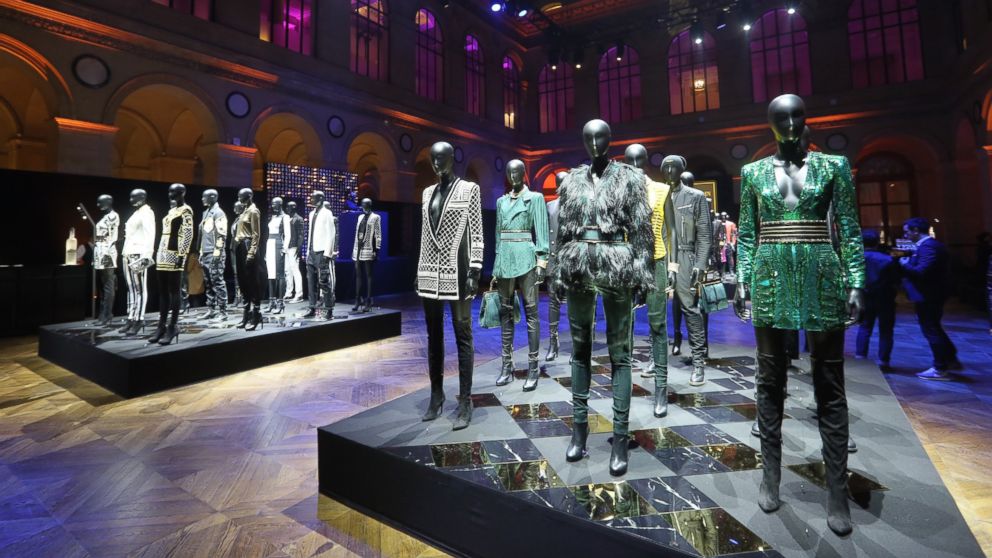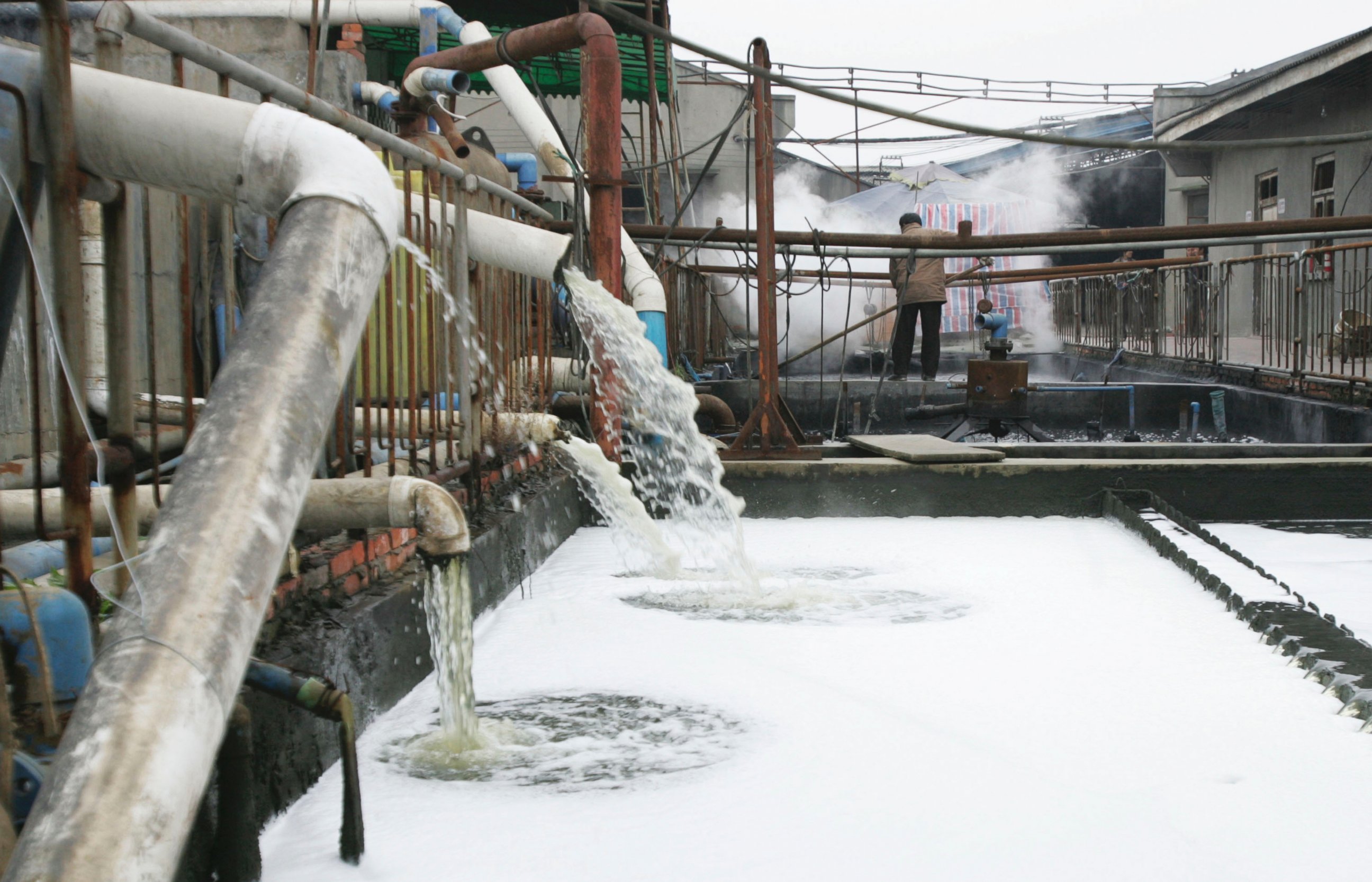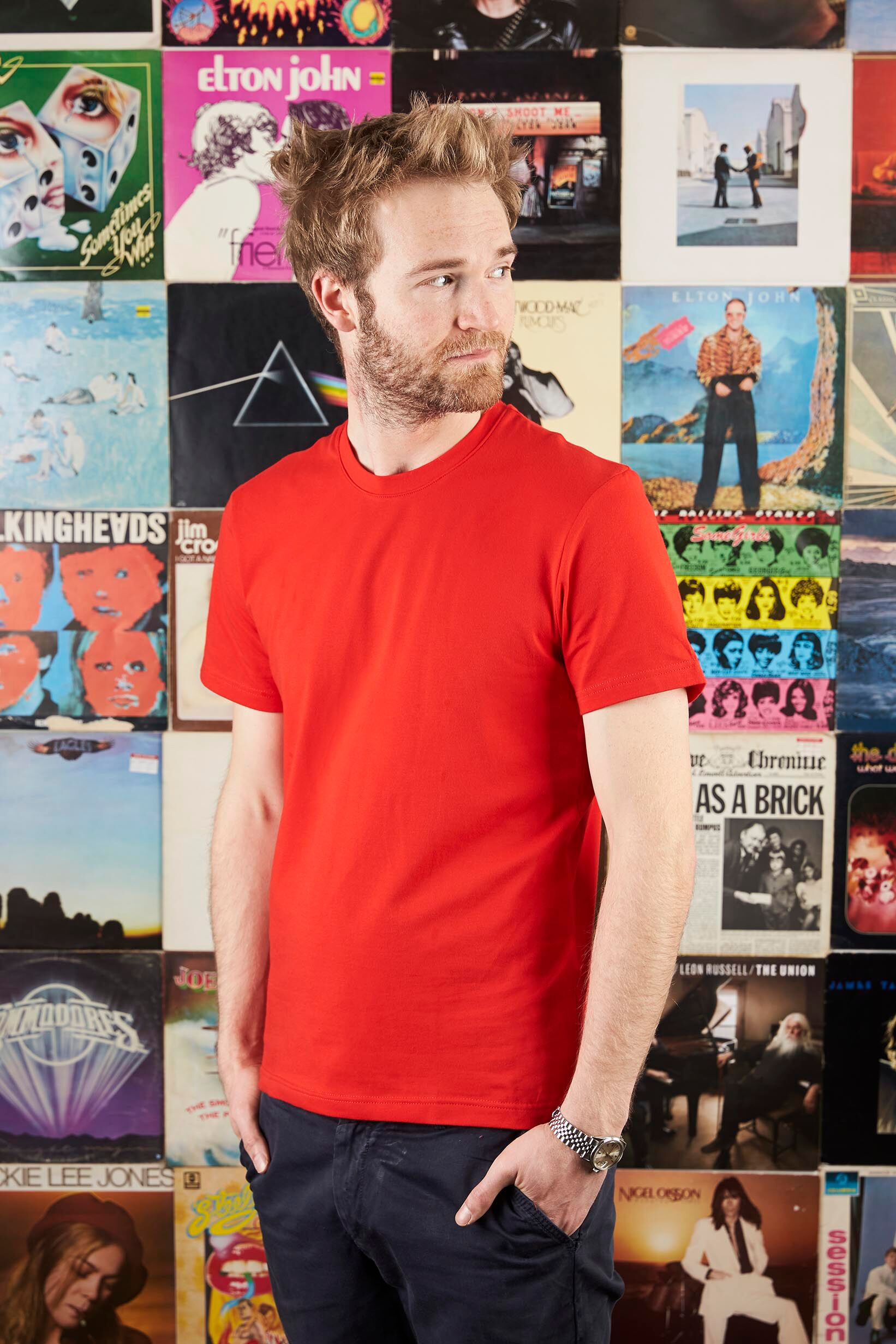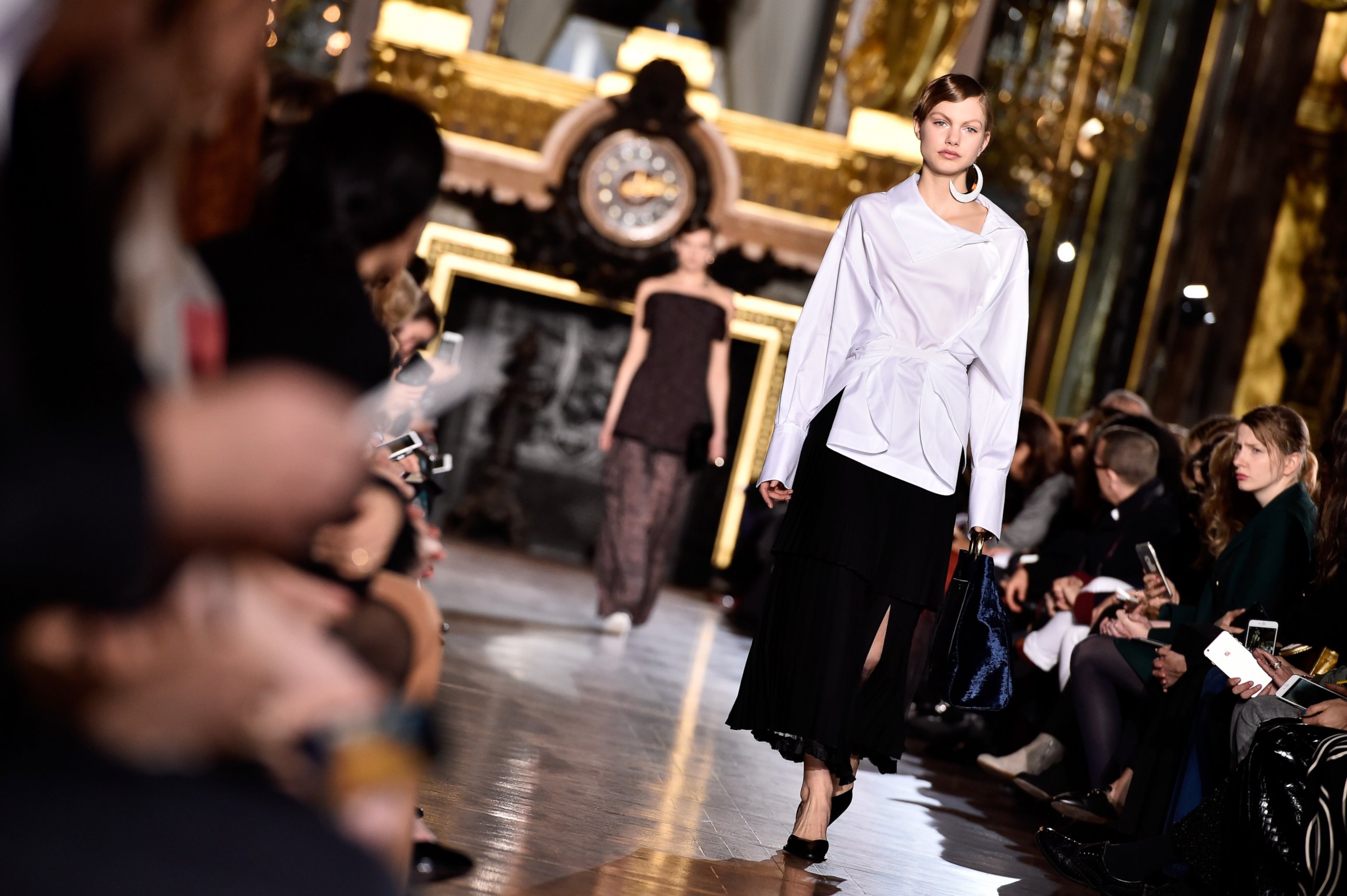How Sustainable Brands Are Turning Their Backs on Fast Fashion Trend

— -- Every fall, fashionistas and students heading back to school rid themselves of their old, worn garments to gear up for the newest trends.
And that mantra — out with the old, in with the new — is reinforced in the constant cycle of trends that make their appearances on the runway each season, and some clothing on the store racks made so inexpensively it almost feels disposable.
Fashion is a $1.2 trillion global industry, and more than $250 billion of that is spent annually in the U.S. alone, according to a 2015 Joint Economic Committee Congressional report.
Fast fashion is a business model that moves designs from the runway to the store quickly to capture current trends and typically can include inexpensive, poorly constructed garments that can be ruined after a couple of trips through the washing machine.
"Much of our current fashion system is built on the idea of obsolescence," Collen Hill, the associate curator of accessories at the Museum at the Fashion Institute of Technology, told ABC News. "Although awareness of the implications of the fast fashion model is growing, the deceleration of consumerism is an uphill battle."
But the fickleness of trends and the demand for clothing consumers don’t mind disposing of after just a season are prompting a number of designers and manufacturers to instead incorporate sustainability into their business models.
Creating sustainable fashion entails a two pronged effort: on the one hand, making products that minimize any negative impact on the environment; on the other, improving the working conditions for everyone involved in design and manufacturing. And according to fashion and textile consultants, Green Strategy, fashion companies shouldn’t stop there, also making an effort "to encourage more sustainable consumption patterns, caring and washing practices and overall attitudes to fashion."

The Dirty Fashion Industry
The concept of pollution usually evokes images of coal power plants, oil spills, barren rain forests and plastic bottles clogging up the world's oceans.
But the fashion industry is among the most polluting in the world, with a plethora of chemicals and water being used to treat, dye and even grow the textiles used to make clothing.
Millions of gallons of wastewater discharged by mills each year contain chemicals such as formaldehyde, chlorine and heavy metals such as lead and mercury, according to the Institute for Sustainable Communication. The World Bank estimates that almost 20 percent of global industrial water pollution comes from the treatment and dyeing of textiles.
It takes more than 700 gallons of water to produce enough cotton, one of the thirstiest crops, needed for a single T-shirt, according to the Institute for Sustainable Communication, and cotton production accounts for 2.6 percent of annual global water usage.
The production of fiber is now responsible for 18 percent of pesticide use worldwide and 25 percent of insecticide used worldwide, according to "The True Cost," a documentary film that explores the impact of fashion on people and the planet.
The Human Cost of Fast Fashion
The world now consumes about 80 billion new pieces of clothing every year, about a 400 percent increase from 20 years ago, according to "The True Cost." People also discard clothing at a high rate, with the average American now generating 82 pounds of textile waste every year, the documentary said.
All that clothing needs to be produced by someone. The manufacturing of garments is the third-largest industry in the world, producing about $700 billion annually, The Financial Post reported in 2014.
But the millions of garment workers in developing countries who make it possible for consumers to purchase cheap clothing and the working conditions they endure in some cases are of great concern to companies devoted to sustainable fashion.
In April 2013 more than 1,100 Bangladeshi workers were killed when the rickety Rana Plaza garment factory collapsed — considered the second-worst industrial accident of all time. The year before, 117 people were killed when a fire swept through another factory in Bangladesh.

Some work has been done to improve the conditions of factory workers. After the two factory tragedies, Bangladesh increased its minimum wages, but only to about $68 a month, well below the $104-a-month living wage American unions recommend, according to the 2015 Australian Fashion Report. And a 2014 report by the International Labour Organization found that the government in Uzbekistan, currently the world's sixth-largest exporter of cotton, has stopped the systematic use of child labor. However, there are fears that pockets of child labor remain in Uzbekistan, particularly with children over the age of 15.
The Beginning of a New Kind of Fashion Brand
How many people do you know who still wear an item they bought three decades ago on a regular basis?
Tom Cridland, the Los Angeles–based brand behind the 30 Year T-Shirt, the 30 Year Sweatshirt and the 30 Year Jacket, created what he says is the clothing industry's antithesis of fast fashion and one-use garments.
The brand's founder, Tom Cridland, and its managing director, Deborah Marx, told ABC News that they disapproved of the tendency for once-worn clothing to be discarded.
Cridland and Marx, both 25, who have been dating since 2009, say the clothing is made so well that it comes with a 30-year guarantee. They say the concept is a fun way to promote sustainability while not preaching about environmentalism and clothing manufacturing rights.

Cridland's first foray into the clothing industry was trousers, which aren't included in the 30 Year guarantee. But, Cridland added more styles to its inventory by thinking about classic, staple garments that he believes won't go out of style in the next 30 years. If any article in the 30 Year line is damaged in that time frame, the customer can ship it back to Tom Cridland to be fixed free-of-charge. Stains are the only form of damage not covered in the guarantee.
"We wanted to offer luxury product at [an accessible price point] and present it in an interesting and thoughtful way," the brand's creator said. The 30 Year T-shirt, sweatshirt and jacket cost about $47, $87 and $333, respectively.
Cridland's clothing is made with what he says is high-quality, heavy and durable cotton sourced from Biella in northern Italy and is manufactured by suppliers in Portugal who have been making clothing since 1964, so they "definitely know how to craft" it to last 30 years, he said. The workers experience good working conditions, he said, adding that he toured the factories himself and "everyone seemed happy."

Celebrities like Leonardo DiCaprio, Rod Stewart and Ben Stiller have been photographed wearing the brand, Marx said.
Other Ethically Conscientious Brands to Consider
Brands and designers are taking notice, and several are vowing to work toward the responsibility to innovate the industry. Several fashion-forward brands are proving that clothes can be inexpensive, ethically made and sustainable.
Asos Eco EditOnline fashion retailing giant Asos has an 'Eco Edit' section that features a wide range of what it says are sustainable clothing, accessories and beauty items, including handcrafted jewelry to upcycled vintage pieces.
"It's fashion that doesn't cost the earth," Asos wrote on its website.
New Balance: The popular running shoe company is now striving for zero waste in production and eliminating issues with global supply chains by conducting checks on its suppliers around the world.

Stella McCartney: High-end designer Stella McCartney is a lifelong vegetarian and incorporates that philosophy into her namesake brand, which doesn't use any leather or fur in its designs.
On its website, Stella McCartney said it takes responsibility to respect "the planet as well as the people and animals in it."
Patagonia: The brand, which caters to outdoor apparel needs, has also committed to monitoring all stages of production closely to ensure that all products are "produced under safe, fair, legal and humane working conditions throughout the supply chain," Patagonia says on its website. This includes working closely with factories and mills and abiding by international labor and human rights standards, it says.
Levi's: The quintessential brand for jeans has created a collection called Levi's WasteLess, which features clothing made of 20 percent postconsumer waste — specifically, recycled plastic bottles. Three to eight plastics bottle are used per pair of WasteLess jeans, Levi's says on its website.
Since 2013, the company has used 11.9 million recycled bottles for jeans and jackets in the WasteLess line, according to Levi's.
Levi's also has a line called WaterLess, which contains jeans that are finished with up to 96 percent less water. More than 13 million WaterLess products have been made, saving over 172 million liters of water in the process, according to Levi's.
Other household names that have made significant improvements to their production include Kmart, which has released a complete list of its direct suppliers in an effort toward transparency, which is key to understanding a brand's values and how its clothing is made. H&M and Zara have also made efforts toward paying better wages to overseas workers, according to the 2015 Australia Fashion Report.
Information on a brand's sustainability stance is easily found online, Kibbey said, stressing the importance of transparency for the sustainability mission to be successful.
"The more that designers speak out about the need for change, the more that consumers will understand it," Hill said. "Designers working within sustainable models should not give up, but continue to move forward and to educate."



